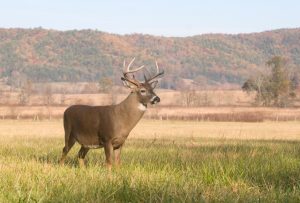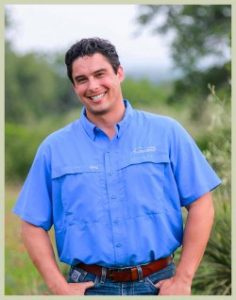Seasons – Winter 2015
From the Plateau Land & Wildlife Management Team,
Today marks the official beginning of winter and we at Plateau are in the holiday spirit. This time of year is full of joy, love and celebrations and we’re happy to celebrate another year as we have a lot to be grateful for.
For one, we are able to work at a company that allows us to do what we love, which is consistently helping landowners enjoy their land and legacy. The holiday season is also a time to look back on the past year and forward to the New Year. We encourage you to include your land and wildlife management when reflecting on 2015 and heading into 2016, and share with us your challenges, successes and plans.
As you settle down by the fire, tie your final bows, and reflect on the closing of another year, be sure to add Plateau to your list of those things you did right this year – because an investment in the enjoyment of your land and the heritage and legacy of land ownership is something that will be around for many more years to come.
 Until next season and Seasons,
Until next season and Seasons,
The Plateau Team
Table of Contents
Plateau Annual Reports
Introducing Sarah Kahlich
Counting Deer
Winter Wildlife Management Activities Checklist
Two Benefits of Wildlife Management That I Didn’t Plan On
Estate Planning With Blended Families
Introducing Julie Briggs
Floodplain Explanation
Plateau Annual Reports
By Kameron Bain, Business Development Manager
Each year, many County Appraisal Districts (CADs) request annual reports from Texas landowners in Wildlife Management as a way to ensure that landowners are in compliance with their wildlife management activities without having to visit their property. With the end of the year nearly here, we want to remind wildlife management landowners to be aware of this and remind them of the importance of good recordkeeping.
Most counties require your annual report to be submitted prior to April 30 of the following year. Plateau offers a service to take this weight off your shoulders. A Plateau Annual Report is thoroughly prepared by a Plateau biologist and includes a Texas Parks & Wildlife annual report form, all activity documentation, and the peace of mind that your Wildlife Management Valuation stays in place for only $495.
A well composed annual report can prevent unnecessary attention from the CAD and is the best way to protect your valuation. Plateau does more than 400 of these each year. We maintain great relationships with all the CADs and know precisely what information they will want to see.
With more and more CADs requesting this report every year, it is essential that qualifications are met and well documented for each year, and on all wildlife management properties. A well-done and complete annual report can make all the difference. Your annual report is your best opportunity to show the appraisal district what you’re doing and is the only thing they may ever see that shows them your commitment to Wildlife Management.
Back to TopBack to Top
Introducing Sarah Kahlich
Sarah Kahlich is Plateau’s new Senior Wildlife Biologist in Hill Country South. She’s originally from east Texas, but has lived on the coast and west Texas before taking a position with Plateau in central Texas. She enjoys being outdoors whether it’s hiking, mountain biking, duck hunting or shooting at clays – she prefers the solitude of the wilderness to the busy city life. Sarah is a graduate from Texas A&M with a degree in Wildlife Ecology and Management and a minor in Rangeland Ecology and Management. She received her Masters from Sul Ross State University in Range and Wildlife Management in 2013.
Sarah is currently an Associate Wildlife Biologist (AWB) and working towards becoming a Certified Wildlife Biologist (CWB). She started at Plateau in July 2014 as Hill Country South’s Staff Biologist I, where her time was spent writing wildlife management plans, conducting camera surveys and spotlight surveys, habitat assessments for Ecological Laboratories, compiling annual reports, and some product installations.
Her vision for the future of Hill Country South is to increase Plateau’s presence in our current areas of service and expand our service areas further west and south of our current counties. She would like to see our current clients continue to receive our guidance and help with the managing of their land for wildlife, as well as help them enjoy and get the most out of their land. She hopes to see new landowners reaching out to us for assistance and guidance in managing their land for wildlife and protecting the wildlife and the land from the urban sprawl Texas has seen in the past and will continue to see in the future.
Back to TopBack to Top
Counting Deer
By Sarah Kahlich, Senior Wildlife Biologist, AWB®
 Sitting in the deer stand, waiting patiently for any deer that may want to kindly venture my direction, my mind starts to wander, as it easily does when I am not actively engaged. How many bucks and does are on this property? How many should be harvested this year? Is the population healthy and sustainable on this habitat? Endless questions zip through my mind, I should have brought a pencil and paper with me. These are probably common questions among deer hunters as they sit in a blind waiting to harvest a deer. The mind jumps to another thought, ‘I should have conducted a deer survey on my property.’
Sitting in the deer stand, waiting patiently for any deer that may want to kindly venture my direction, my mind starts to wander, as it easily does when I am not actively engaged. How many bucks and does are on this property? How many should be harvested this year? Is the population healthy and sustainable on this habitat? Endless questions zip through my mind, I should have brought a pencil and paper with me. These are probably common questions among deer hunters as they sit in a blind waiting to harvest a deer. The mind jumps to another thought, ‘I should have conducted a deer survey on my property.’
All these questions are good ones and should be going through your mind. Maintaining a healthy deer herd does not happen by chance but through proper management. If you decide to have a deer survey conducted before deer season next year, whether it is a camera survey or a spotlight survey, do you really know what the results mean when they come back to you? It seems straight forward, I have 15 bucks and 30 does, but when you actually look deeper into the survey you will find out these numbers are not as simple as you might have thought.
It would be ideal to be able to count every single animal on your property during your survey, but like a survey of humans in the United States, not everyone participates or can be found to contribute to the results. Deer surveys are very similar in that they are samples, or an estimate, of the population. It is not a complete count and is subject to some error. Keep in mind: It is nearly impossible to obtain a complete count of deer, even when contained in a high fence. Deer cannot be rounded up in a corral like cattle and counted. Instead of relying solely on one year’s survey, it is best to rely on multiple consecutive years of survey data, called a trend. Trends are more important than actual numbers from one year. Trends allow you to see what your deer population has been doing in the past, if your numbers are decreasing each year and you have not harvested deer, it could be from low fawn recruitment, which could be caused by drought conditions, predation, or other reasons. High doe populations might mean you should focus more on culling does instead of bucks.
Herd composition numbers are as important as total numbers as they can greatly influence harvest recommendations. Doe:Buck ratios (sex ratios) tell us how much of the harvest should be composed of females and how many males. This number also tells us what animals may be replaced by births. A doe:buck ratio of 2:1 (2 does for every buck)is a desirable ratio, permitting good fawn production while keeping growth manageable. As the ratio increases, the number of harvestable bucks decreases and population growth can quickly get out of hand. If the ratio was 10:1 the population is skewed heavily towards females, requiring a higher doe harvest. You should almost always harvest as many, or more, does than bucks, but the actual harvest rates should be based on ratios from your surveys.
A second important ratio is Fawn:Doe, this number indicates the health of the herd, in terms of reproduction. During drought periods reproduction numbers will be low because females become stressed by the decrease in quality forbs and browse. When the conditions are favorable (timely rains, plenty of forage) white-tailed deer females tend to give birth to twins. Most survey techniques underestimate fawns. They do not show up on cameras as often as adults and they may remain hidden during spotlight surveys. This makes the fawn:doe ratio appear lower than what it may actually be. Biologists may use an assumed ratio based on history and current conditions to calculate harvest recommendations.
Sex ratios and fawn crops are best determined from incidental observations. Bucks, does, and fawn observations collected during daylight hours while driving or sitting in blinds are an important supplement to spotlight or remote camera surveys as they help more accurately depict these ratios. Assumed ratios may be used if ratios are far too low or high and do not seem realistic for the property. If very low fawn ratios are used, it could result in not harvesting enough deer. The following year the deer population might appear to have exploded. Doing this repeatedly can result in deer overpopulation that exhausts available forage, leading to the need to harvest even more deer to help keep the population at acceptable numbers. In the Edwards Plateau and many other parts of Texas west of I-35, under-harvesting is a much greater concern than overharvesting as deer populations are more likely to be too high rather than too low.
The most important thing to keep in mind when conducting a camera survey or a spotlight survey, whether you are doing it yourself or using Plateau, is that the results are not a complete count of the deer on your property, only an estimate. Research shows that we (biologists included) miss seeing a lot of deer during spotlight surveys. Some deer are excellent at avoiding detection when you conduct a survey, especially fawns. Since camera surveys are an attempt at a complete count, we recommend turning off feeders that will not be used for the survey at least 1-2 weeks prior to a camera survey so deer can become accustomed to using the feeders designated for the camera survey. Exotics on your property can deter white-tailed deer from utilizing a feeder as well.
If your survey reports seem low compared to the number of bucks, does, and fawns you have seen on your property, it is not uncommon and does not warrant a huge concern in any given year. Utilizing multiple methods increases your observations and can be used to increase the reliability of the survey and the resulting recommendations. To accomplish this, record observations when you are driving or walking around your property during the daylight, possibly conducting dedicated daylight drive surveys through your property. Look at the vegetation on your property, checking browse on desirable vegetation is an excellent indicator of the deer population. If you are seeing heavy browse pressure on all the new growth, chances are there are too many deer. Keep harvest records; the condition of deer being harvested say a lot about what is happening in your deer herd. Recording weights, antler size, and body conditions are important, but each deer should be aged to at least three categories – young (0.5-1.5), middle-aged (2.5-3.5), and mature (4.5+). Tooth-wear aging doesn’t do a great job of nailing down the actual age in years, but it can let you put deer into these three categories.
In Summary: All survey information is most useful as trend data. Keeping yearly survey information will help make your trend data more robust, which will help in determining the impact of your current management practices. Utilize more than one survey method – the more data you collect the better your harvest recommendations will be. Not every deer will show up on camera. Just like you may see signs of hogs on your property, not seeing any on your camera or during your spotlight survey does not mean they are not there. Surveys are estimates and are subject to some error, but when conducted annually, they provide useful information for setting your desired harvest and monitoring your deer herd.
Happy Hunting!
Back to TopBack to Top
Winter Wildlife Management Activities Checklist
By Kameron Bain, Business Development Manager
One of the more common and rewarding wildlife management activities is the use of nest boxes for supplemental shelter. Carolina Wren, Carolina Chickadee, Black-crested Titmouse, Tufted Titmouse, Purple Martin and Eastern Bluebird are local, cavity-nesting songbird species that utilize nest boxes for additional shelter and nesting. But nest boxes are not limited to songbirds. It is not uncommon to also find non-target species like ringtails, snakes, squirrels, and amphibians nesting in these boxes. Whatever the species is that you are managing for, the practice of monitoring and cleaning out nest boxes can be rewarding and adventurous at the same time.
The Wow Factor
 The Plateau Team hopes you are spending this Holiday Season enjoying time with family and friends as well as enjoying your year of accomplishments in wildlife management. In just nine days we will be celebrating the start of a New Year and it is never too early to start planning for your 2016 Wildlife Management Activities. There are some key activities that are popular with many landowners that are completed during or start in winter months. Start your New Year off right by implementing one of these activities:
The Plateau Team hopes you are spending this Holiday Season enjoying time with family and friends as well as enjoying your year of accomplishments in wildlife management. In just nine days we will be celebrating the start of a New Year and it is never too early to start planning for your 2016 Wildlife Management Activities. There are some key activities that are popular with many landowners that are completed during or start in winter months. Start your New Year off right by implementing one of these activities:
- Wintering and Resident Bird Surveys (WRBS): We are currently finishing these up for the season but still have some room to fit in a few more before February 15th. Schedule yours today!
- Nest Boxes: Check and clean them before the upcoming breeding bird season
- Imported Red Fire Ant Control: Begins in March
- Brush Management: Needs to be done before the breeding bird season, which begins in early March
- Spring Breeding Bird Surveys: Begins March 15th
- Camera Surveys: Post hunting season is a good time for this activity
- Feral Hog Control: Late winter through spring is an ideal time to reduce feral hog numbers prior to spring nesting/fawning
- Strip Mowing and Discing: Best conducted up until late February
- Tree Trimming: Not a qualifying activity but this is the time of year to do it
- Tree and Shrub Planting: This is the best time of year to plant woody plants
Back to TopBack to Top
Two Benefits of Wildlife Management That I Didn’t Plan On
By Tim Milligan, Landowner Services
There are others, but these two stand out and deserve mention as I look back on my year in Wildlife Management.
One: Being in Wildlife Management brought me closer to my family
Teaching my son how to half cut mesquite and why you might want to do that instead of killing it in some instances. Talking to both my son and daughter about the changes in the habitat on our place since moving to Wildlife and what these changes mean to the wildlife. Working with both of my kids on our wildlife activities at our place and sharing a new appreciation for wildlife with my kids that I honestly did not have before working at Plateau for some time. Practicing wildlife presentations in front of my family and having interesting stories from my daily work to share with my family (they like my wildlife experience stories much more than the old car business stories, and I can share almost all of these). Hearing my son talk about the differences in types of ants and how some are beneficial and others are not and sharing my disdain for Willow Baccharis with my son, many, many times. Getting to share my work with both of my kids and their classmates. And finally, watching my daughter complete a Girl Scout project, a book of birds common to our area, for West Cave Preserve near Austin, I would not have been able to fully appreciate what she did or get as much joy out of it myself without the knowledge and experiences I have now. Proud dad moment: Abby’s Book Of Birds.
Two: Being in Wildlife Management has helped me relate to other landowners
In case you didn’t know it, I’m in Wildlife Management on my personal property. Like most of you I have questions and concerns from time to time. I say that to let you know that if you ever call here and we get to talk Wildlife Management, expect to talk. I learn something new every time I get to talk to any of our landowners and I cherish those opportunities. When they happen, and I wish they happened more often, these conversations help me as much as I hope they do you, probably more. Wildlife Management, stewardship, conservation, whatever you want to call it, it’s a marathon and not a sprint. It’s a process and we keep learning, changing, adapting and getting better at it over time. At least that’s how I look at it. Knowing that is part of what keeps it interesting. Call me at the office sometime and let’s talk Wildlife Management, or whatever (quail are a good topic too). I’ve got a lot to learn.
Just a bit of a different way to look at the benefits of Wildlife Management. There’s a lot in it for me. Here’s hoping you all have some of the same.
Back to TopBack to Top
Plateau Winter Seminars
By Molly Cleveland, Marketing Assistant
Every winter, Plateau Account Managers travel around the great state of Texas to educate folks about the many benefits of Wildlife Management Tax Valuation (WMV). These seminars are free and open to anyone interested in learning more about WMV. During each seminar, Plateau Account Managers will cover:
- An overview of Wildlife Management Tax Valuation (“Wildlife Exemption”)
- The 7 Wildlife Management categories
- Traditional Ag vs. Wildlife… is it right for you?
- Concrete answers to concerns that plague many landowners
- How Plateau can help
Though some of you may already be under a WMV, these seminars will also benefit you and anyone who owns rural land in Texas, including those who are currently in Ag. These seminars will take place in February and March – the schedule will continuously be updated. To learn more visit our webpage.
Back to TopBack to Top
Estate Planning With Blended Families
By Margaret Menicucci, Attorney at Braun & Gresham, PLLC
It is estimated that about 65% of remarriages in America involve children, making them what we have come to call “blended families.” These families face unique challenges in planning how to protect loved ones and pass on assets to the next generation. Without a good estate plan, assets can be controlled by family members who don’t understand or may not value your goals and intentions, and worse, beloved members can be excluded from inheritance or left without adequate support.
When a parent of minor children re-marries, frequently the children’s other parent, the ex-spouse, continues to share custody. If the re-married parent dies, the ex-spouse will not only have custody of the children, but also may gain control of the assets inherited by the minor children. This result can be avoided by creating trusts for the benefit of the children and designating someone other than the ex-spouse as the trustee. Candidates for trustee include the new spouse, a sibling or grandparent. Planning and communication will also help you create a role for your current spouse in the children’s upbringing.
Another challenge for any blended family (those with minor children or adult children) is providing an inheritance to the children while ensuring long-term support for the current spouse. It is reasonable to expect that the loyalties between the children and a non-parent spouse are not as strong as the loyalties between a parent and child. If your surviving spouse inherits all of your assets, you can’t guarantee that some of those assets will ultimately pass to your children from a prior marriage. Similarly, if your children inherit all of your assets, you can’t ensure that they will use some of those assets to support your surviving spouse. Employing insurance to provide an inheritance and crafting trusts for the benefit of your spouse or children, allows you to best provide for your family if you passed away.
If rural land is an important asset in your blended family, specific strategies developed in your will or trust can ensure that the land is passed down and managed by the family members you deem most appropriate. In addition to designating who receives the land, you can set aside certain financial assets to assist your family in managing the land and avoiding partition.
These realities can be hard to discuss, but discussion and planning are critical to caring for the family that you love. We frequently guide blended families through this process, identifying priorities, protecting family members and assets, communicating with loved ones, and seamlessly passing family land to the next generation. While the family is together for this holiday season, have these important conversations with them. I would be happy to meet with you and your family to develop a plan that is specific to your family’s goals and needs.
Back to TopBack to Top
Introducing Julie Briggs
Braun & Gresham and our family of companies is so proud to formally announce the addition of the firm’s newest attorney, Julie Ermis Briggs.
Julie joins our thriving team of now 6 attorneys. She will work closely with clients to help them navigate property tax issues, guide them through our Texas Ecolab program, and lead them through what can often be an emotional process of litigation matters involving their land. Julie’s previous career includes working in a Top 6 accounting firm, as well as holding a role at a well-known national law firm. Her breadth of experience is ideal for Braun & Gresham, as her legal analytical skills, and meticulous nature, allows her to work through problems with her clients and provide creative and innovative solutions by thinking outside the box on a variety of landowner issues.
Also, as the mother of an avid equestrian, Julie understands the “ins” and “outs” of horse ownership. This passion for horses and all things equine, allows her the ability to offer her legal services to clients needing assistance with matters involving equine law.
Julie is a native Austinite with family ties to the Driftwood-area, dating back to some of the earliest settlers in the region. She and generations of her family are landowners themselves and remain closely tied to the land. These deep roots, steeped in rural Texas history, give her a unique understanding of the Texas landowner’s perspective.
To schedule an appointment with Julie, please CLICK HERE.
Floodplain Explanation
By Craig Bowen, Managing Partner of Plateau Land Group
Buying or selling a farm or ranch with floodplain is sometimes daunting. Particularly after the Central Texas floods in 2015, buyers and landowners are sensitive about any potential for flooding. This emotional reaction leads to underappreciation of the property, the floodplains themselves and the value they bring to the property and our overall ecosystems, and price conflicts during real estate transactions.
What is a floodplain?
Flooding can happen virtually anywhere, but floodplains are areas of land that are periodically – usually seasonally – flooded. Areas most prone to flooding are called “floodplains,” and are typically adjacent to creeks, rivers, lakes, and oceans. These areas are usually flat with areas of higher elevation on one or both sides. A floodplain does not necessarily mean that the area floods every time it rains, but the risk for flooding in floodplains is historically and measurably higher than in areas outside the floodplain.
Floods carry sediment knows as “silt,” a combination of soil, detritus, and other organic material rich in nutrients, to the floodplain areas. This nutrient rich moist soil produces lush and often diverse vegetation for grazing and wildlife habitat, so while not always valuable for traditional development, floodplains are usually very fertile open space areas.
Special Flood Hazard Area (SFHA)
Floodplains are usually categorized by the perceived risk of flooding across a span of time. The most common floodplains are referred to as 100- and 500-year floodplains. These areas, categorized as “Special Flood Hazard Areas,” are the most likely to be affected by floods. Sellers of SFHAs are required by law to disclose this information to buyers, even when only a portion of the property is in a SFHA.
100-yr = 1% chance per year of flood
Contrary to popular belief, 100-year floodplains do not flood “once per century,” but instead there is a 1% chance of appreciable flooding in any given year.
500-yr = 0.2% chance per year of flood
These floodplains are usually labeled Zone B or Zone X on Flood Insurance Rate Maps (FIRM) with considerably lower risk of annual flooding.
Understanding Flood Maps
Insurance Rate Maps (FIRM), per FEMA, are “the official map of a community on which FEMA has delineated both the special hazard areas and the risk premium zones applicable to the community”. Shaded areas on the FIRM maps represent the areas subject to flooding.
Flood Map Changes
Development, erosion, and weather patterns all can affect floodplain boundaries; FEMA conducts research to create the maps such as collecting data for river flow, storm tides, rainfall, and topography.
Insurance and Building
Building on or near floodplains is possible; be sure to find out more about the lenders’ and insurance company’s specific requirements. Flood insurance is available and required for properties in the SFHAs at varying rates. For more information see: http://www.fema.gov/pdf/floodplain/nfip_sg_unit_9.pdf.










Sorry, the comment form is closed at this time.